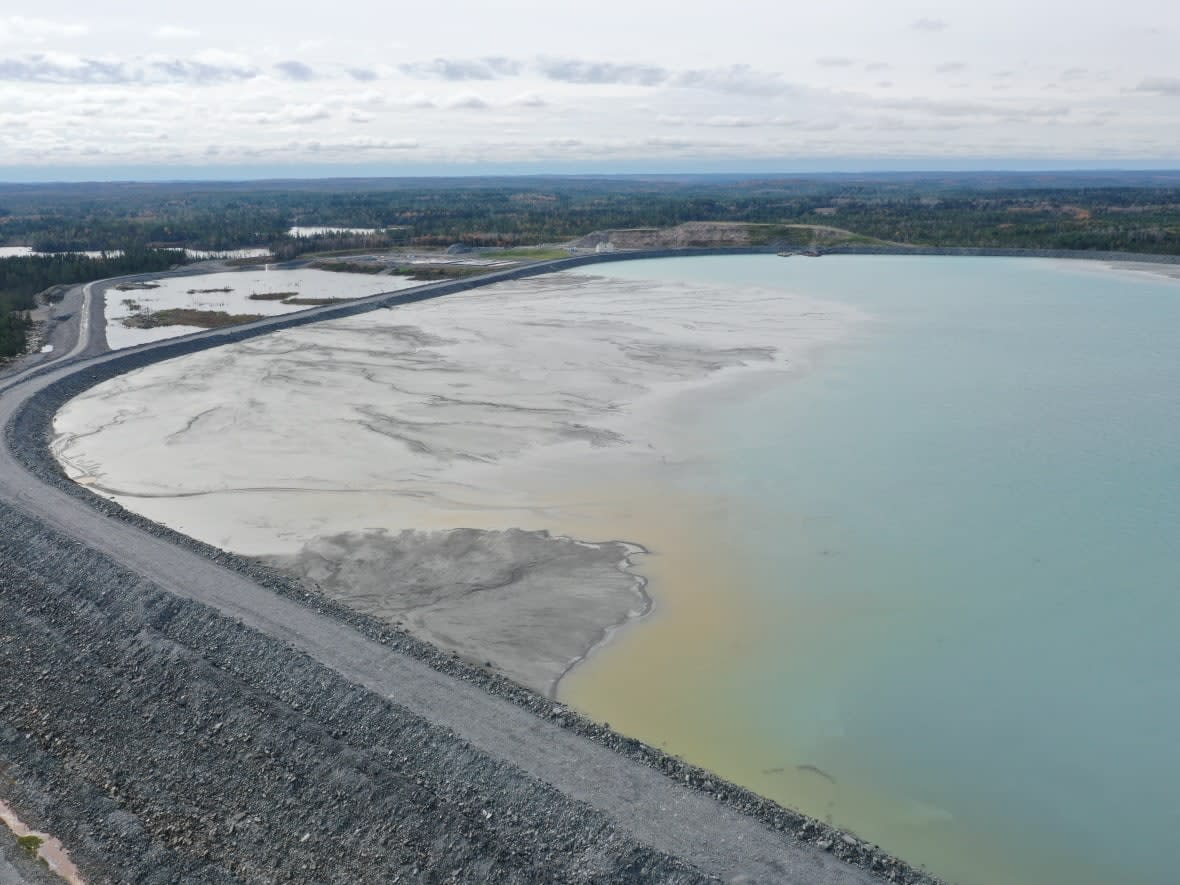Province approves mining company's request to raise tailings dam wall

The Environment Department has approved a request by the province's only operating gold mine to raise the height of the wall around its tailings waste — a move critics worry could lead to a dam breach.
St Barbara, the Australian company that owns the Touquoy gold mine in Moose River, N.S., issued a statement for investors on its website Wednesday morning noting construction for the lift will begin in the coming weeks.
The company said the approval will extend the life of the Touquoy mine to the end of 2023.
In June, St Barbara said operations at the mine would have to be suspended if the province did not permit the lift.
In its statement on Wednesday, St Barbara credited its "recent interactions with key stakeholders in Nova Scotia" for gaining the lift approval, noting that those discussions "enabled improved co-ordination and communication with the Nova Scotian government and the Canadian federal government."
"I am keen to continue to develop the new collaborative approach with the government which helped with the delivery of today's permit," said St Barbara CEO Craig Jetson in the statement. "I will be returning to Nova Scotia shortly to continue to build on the positive momentum and support the team as we also progress permitting for the in-pit tailings deposition and Beaver Dam."
Beaver Dam is one of three other mines the company has proposed, which include Cochrane Hill and Fifteen Mile Stream. Those proposals are in various stages of the environmental assessment process.
Concern about dam breach
The Ecology Action Centre's Karen McKendry, who tracks developments at the mine, called the province's approval "really disappointing," saying it puts the province's environment and people at greater risk.
"We know that tailings dams burst all over the world every year … and two of the factors that put the dam more at risk for failing are increasing the height and holding back more volume."
McKendry also took issue with how the decision was made. While significant changes to a project usually go through an environmental assessment process, which involves input from specialists in the provincial and federal governments, outside experts and the public, the request to raise the wall did not.

"That process is very much in a black box right now, and I think the public should question the lack of transparency around this decision that allows the company to advance their plans on their timeframe. But was there due diligence and the time taken to see if this is really a safe decision?"
In a statement, the province said the approval comes with terms and conditions that include the addition of three surface-water and five groundwater monitoring stations, as well as studies and proposed mitigation measures for "the expected tailings management facility seepage."
"After a thorough review, the administrator is satisfied that the proposed activities are in line with the applicable legislation, regulations, policies, and standards. Raising the height of the tailings facility provides the company with required capacity," said a statement from Environment Department spokesperson Tracy Barron.
Other changes still awaiting decision
In a separate application, a company subsidiary that operates the mine, Atlantic Mining Nova Scotia Inc., has asked the province to allow it to store tailings — the material that's left over after gold is extracted — in the open pit at Touquoy once mining is completed.
In May, Environment Minister Timothy Halman decided the company did not provide enough information about the potential environmental effects of that proposal to make a decision. He gave the company one year to submit additional plans and studies.
Earlier this year, Atlantic Mining was fined for breaching federal and provincial environmental laws requiring it to test sediment levels that could be hazardous to fish habitat and to regularly report findings to government. The company originally faced 32 charges, but those were eventually reduced to just two through negotiations.
MORE TOP STORIES


